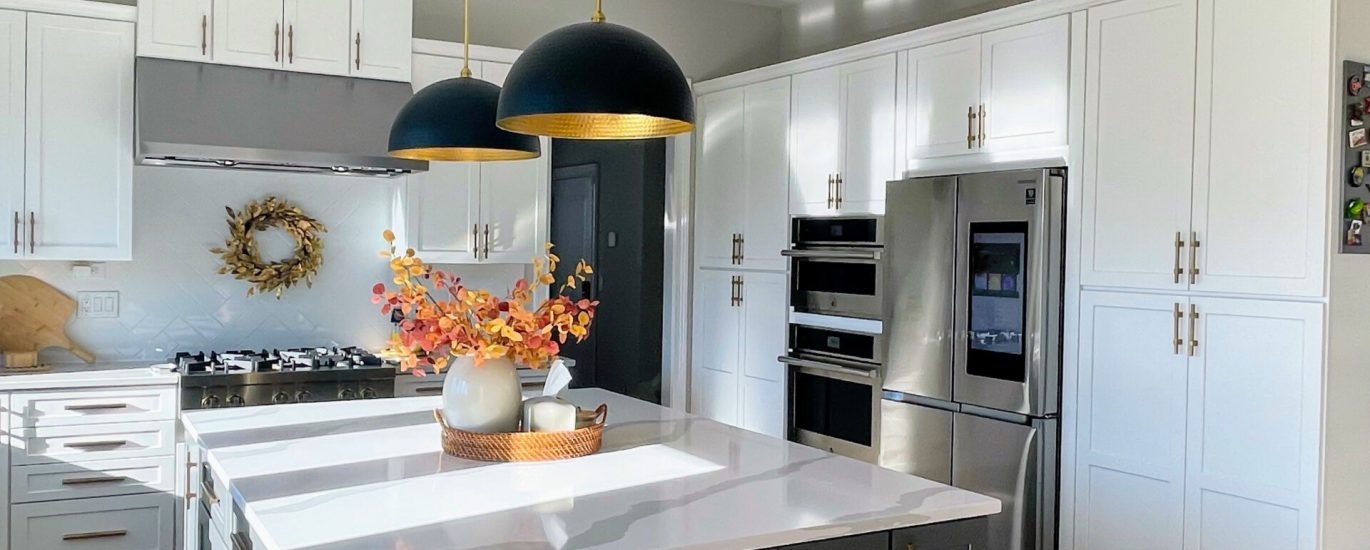Chandeliers, traditionally associated with formal spaces like ballrooms and dining rooms, have become increasingly popular in kitchen design. As kitchen aesthetics have evolved, so has the use of more elaborate lighting fixtures. A chandelier can serve as a focal point in the kitchen, adding sophistication and style to this central area of the home.
Chandeliers are available in various styles to suit different kitchen designs, from modern to traditional. The trend of incorporating chandeliers in kitchens has grown as homeowners seek to create a more luxurious and welcoming atmosphere. The wide range of chandelier styles, sizes, and materials allows for compatibility with diverse kitchen designs.
A well-selected Benoits Lighting chandelier can enhance the kitchen’s overall aesthetic while providing functional lighting for cooking, dining, and entertaining. This article will discuss the advantages of adding a chandelier to a kitchen, offer guidance on selecting an appropriate chandelier, provide information on installation and placement, address maintenance and cleaning, and suggest creative ways to integrate chandeliers into kitchen decor.
Choosing the Right Chandelier for Your Kitchen
Size and Scale
The first consideration is the size of your kitchen and the height of your ceilings. A large, multi-tiered chandelier may be overwhelming in a small kitchen, while a tiny fixture may get lost in a large, open-concept space. It’s important to measure the dimensions of your kitchen and consider the scale of the chandelier in relation to the room.
Style and Aesthetic
Additionally, you’ll want to take into account the style of your kitchen. If you have a modern, minimalist kitchen, you may want to opt for a sleek, geometric chandelier with clean lines. For a more traditional or rustic kitchen, a wrought iron or crystal chandelier may be a better fit.
Lighting and Functionality
Another important consideration when choosing a chandelier for your kitchen is the type of lighting it provides. While chandeliers are primarily decorative, they also serve a functional purpose by providing ambient lighting for the room. Consider the amount of light output you need in your kitchen and choose a chandelier with the appropriate number of bulbs and wattage. You may also want to look for a chandelier with dimmable lights to create different moods in your kitchen throughout the day.
Material and Finish
Finally, don’t forget to consider the material and finish of the chandelier. Whether you prefer brass, bronze, chrome, or crystal, the material and finish of the chandelier can have a significant impact on the overall look and feel of your kitchen.
Installation and Placement Tips for Kitchen Chandeliers
Once you’ve chosen the perfect chandelier for your kitchen, it’s important to carefully consider its installation and placement to ensure that it enhances the overall design of the space. The first step is to determine the ideal location for your chandelier. In most kitchens, the chandelier is installed above the island or dining table to provide focused illumination for these areas.
If you have a galley kitchen or a small eat-in nook, you may choose to install the chandelier in the center of the room to create a central focal point. It’s important to ensure that the chandelier is positioned at an appropriate height above the surface below it. As a general rule of thumb, the bottom of the chandelier should be approximately 30-36 inches above the table or island surface.
When it comes to installation, it’s always best to hire a professional electrician to ensure that your chandelier is safely and securely installed. The electrician will be able to determine if any additional support is needed for heavier fixtures and will ensure that the wiring is properly connected to your home’s electrical system. Additionally, if you’re installing a new chandelier in place of an existing light fixture, it’s important to turn off the power at the circuit breaker before beginning any work.
Once your chandelier is installed, take some time to adjust the height and position as needed to achieve the perfect balance and visual impact in your kitchen.
Maintenance and Cleaning of Kitchen Chandeliers
Once your kitchen chandelier is installed, it’s important to keep it clean and well-maintained to preserve its beauty and functionality. Regular dusting is essential to prevent dirt and grime from building up on the fixture’s surfaces. Use a soft microfiber cloth or duster to gently wipe down the chandelier at least once a month, paying special attention to any intricate details or crystal accents.
For more thorough cleaning, you may need to remove the chandelier from its mounting and carefully clean each individual component with a mild cleaning solution and water. Be sure to dry each piece thoroughly before reassembling and re-installing the chandelier. In addition to regular cleaning, it’s important to inspect your kitchen chandelier periodically for any loose or damaged parts.
Check that all bulbs are functioning properly and replace any burnt-out bulbs as needed. If you notice any loose wires, cracked glass, or other issues with your chandelier, it’s best to contact a professional for repairs rather than attempting to fix it yourself. By staying on top of maintenance and cleaning tasks, you can ensure that your kitchen chandelier remains a stunning focal point in your home for years to come.
Creative Ways to Incorporate Chandeliers in Kitchen Decor
In addition to serving as a source of light, a kitchen chandelier can also be used as a decorative element to enhance the overall design of your space. There are many creative ways to incorporate chandeliers into your kitchen decor beyond simply hanging them above an island or dining table. For example, you can use multiple smaller chandeliers in a larger kitchen to create a dramatic effect and provide balanced illumination throughout the room.
Alternatively, you can hang a mini-chandelier above the sink or in a cozy breakfast nook to add a touch of elegance and charm. Another creative way to incorporate chandeliers into your kitchen decor is by choosing a fixture with unique or unexpected materials. For example, a chandelier made from reclaimed wood or industrial metal can add an eclectic touch to a modern kitchen design.
You can also experiment with different shapes and styles of chandeliers to create visual interest in your space. Consider a geometric or abstract chandelier for a contemporary look, or opt for a traditional crystal chandelier with a modern twist for a timeless yet updated feel.
Benefits of Adding Chandeliers to Your Kitchen
Elevating Your Kitchen’s Design
Whether your kitchen style is traditional, modern, or somewhere in between, there is a chandelier out there to complement your decor and make a stunning statement.
In addition to their decorative appeal, chandeliers also provide functional lighting for cooking, dining, and entertaining in the kitchen. Furthermore, adding a chandelier to your kitchen can increase the resale value of your home by enhancing its overall appeal and creating a memorable impression on potential buyers.
Functional Lighting and Increased Resale Value
A beautifully designed and well-placed chandelier can set your kitchen apart from others on the market and make it more attractive to prospective buyers.
Energy Efficiency and Cost Savings
Additionally, by choosing an energy-efficient chandelier with LED bulbs or dimmable lights, you can reduce energy consumption and lower your utility bills while enjoying the beauty and ambiance of your illuminated space.
Conclusion and Final Tips for Elevating Your Kitchen with Chandeliers
In conclusion, adding a chandelier to your kitchen can transform the look and feel of this important room while providing functional illumination for various activities. When choosing a chandelier for your kitchen, consider factors such as size, style, lighting type, and material to ensure that it complements your space and meets your needs. Proper installation and placement are essential for maximizing the visual impact of your chandelier while ensuring safety and functionality.
Regular maintenance and cleaning will help preserve the beauty and functionality of your kitchen chandelier over time. Get creative with how you incorporate chandeliers into your kitchen decor by experimenting with different styles, materials, and placement options. Finally, consider the many benefits of adding a chandelier to your kitchen, including increased resale value and energy efficiency.
By following these tips and considering all aspects of choosing, installing, maintaining, and creatively incorporating a chandelier into your kitchen decor, you can elevate this important space in your home while enjoying the beauty and functionality that a well-chosen chandelier provides.






